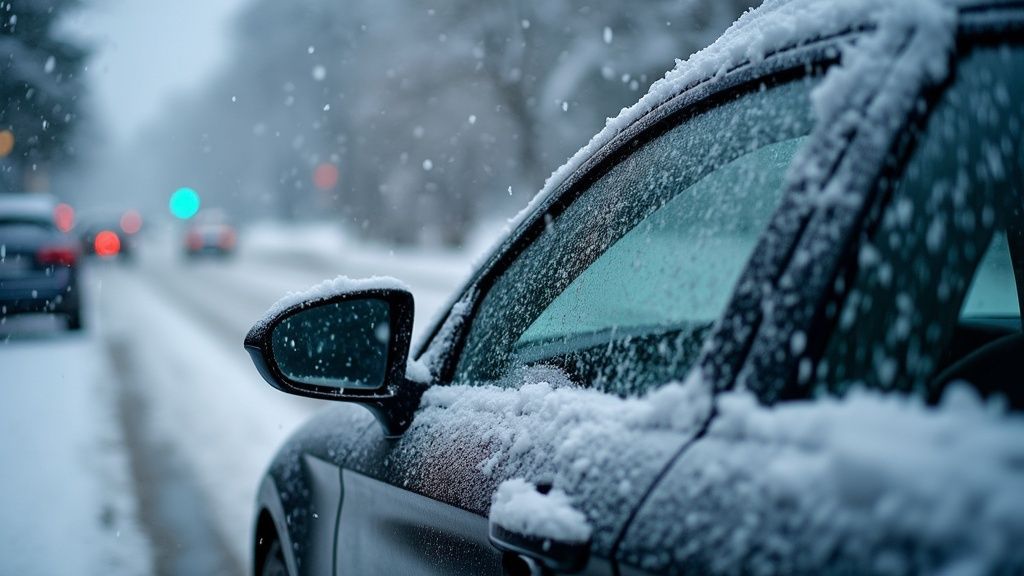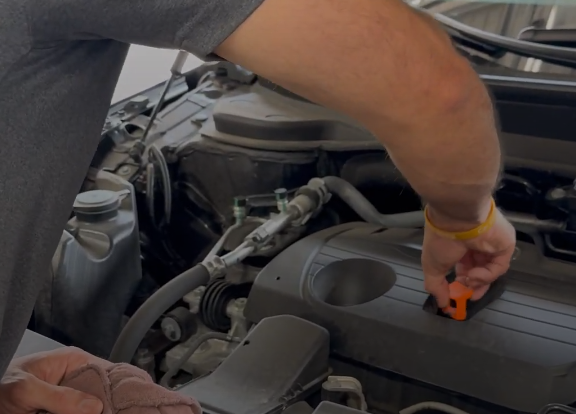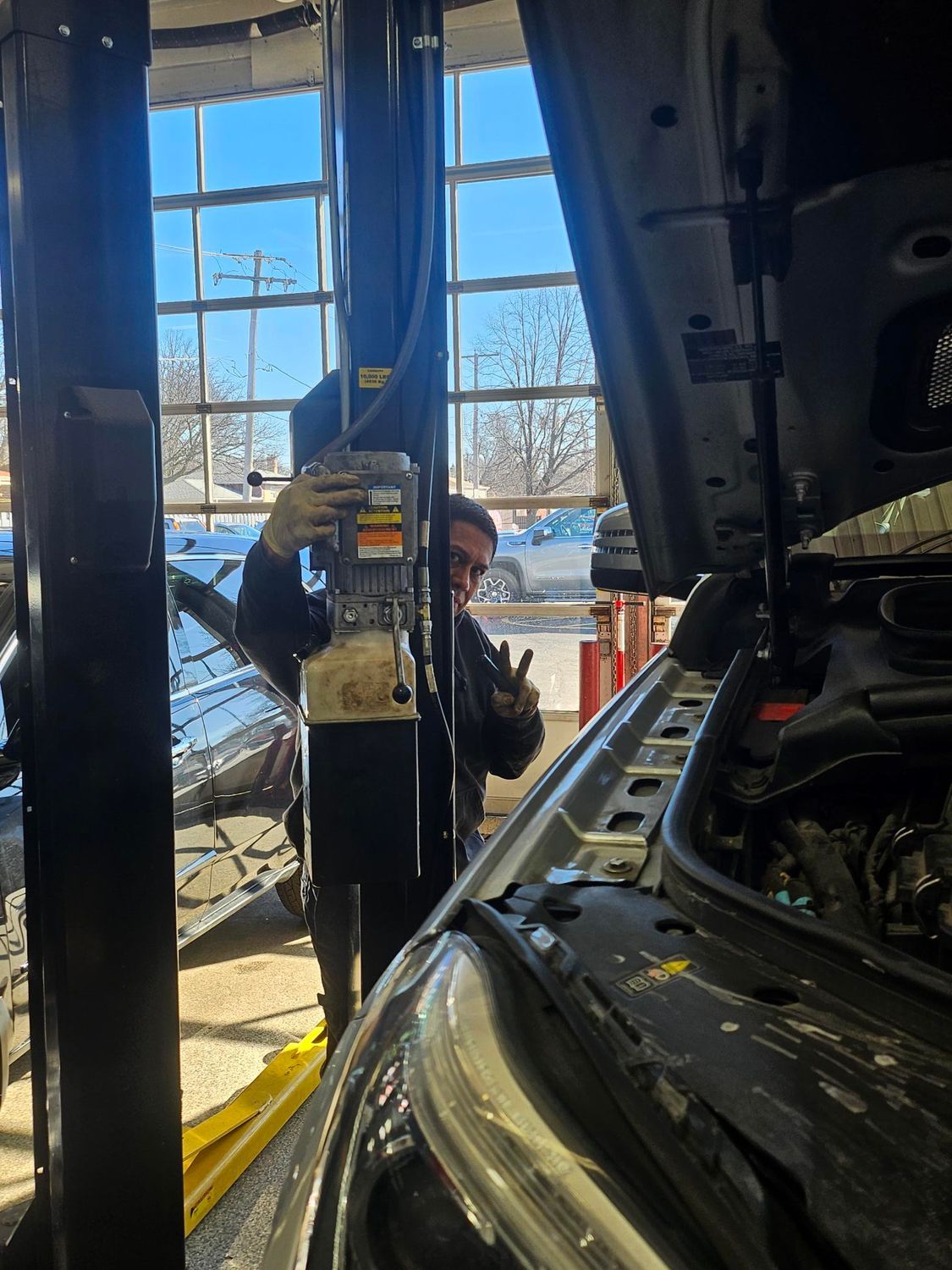Preparing Your Car for Winter: Essential Checks and Services
Severe Weather Driving

As the chill of winter sets in, it’s time to think about how we can keep our vehicles running smoothly through the icy months ahead. A bit of prep can make all the difference in keeping your car reliable when the temperature drops.
So, let’s jump into some unique tips and tricks to help you tackle the cold.
First off, you’ll want to check your fluids.
Ensuring antifreeze is at the right level is essential for preventing your engine from freezing up.
Don’t forget about your windshield wiper fluid; maintaining clear visibility is key when the weather turns nasty.
Next, let’s talk about your tires. It’s essential to follow proper winter car maintenance tips, such as checking your antifreeze levels, ensuring your windshield wipers are functional, and keeping your tires properly inflated to handle snow and ice for safe driving in harsh weather conditions.
Preparing Your Vehicle For Cold Weather
As we’ve talked about how important it is to check fluids and tires for winter driving, there are a few more important steps you should take to help your car thrive in cold conditions. Giving your car some attention now can really pay off later, especially when the temperature drops.
- Why Winter Preparation Matters
- Cold weather can greatly affect your vehicle's performance and safety. Regular car care, especially during the winter season, can help prevent bigger problems down the road.
- Taking simple steps now can save you from high repair costs and emergencies later. Getting ahead of potential issues will make sure your car stays in great shape for the road.
- Essential Checks Before Winter Hits
- Check Coolant Levels: It’s crucial to make sure your antifreeze mixture is just right; a quick check can confirm that your engine stays safe from freezing temperatures. Don’t skip this, as a well-looked-after engine really is your best buddy when the weather gets tough.
- Battery Care: The cold can drain your automotive battery faster, so it's smart to check its charge and connections. If it’s not in good shape, you might find it struggles to give the power needed to start your vehicle on those icy mornings.
- Tires: Make sure your snow tires have enough tread depth since this can greatly affect your traction on slippery roads. Adjust the cold inflation pressure according to what’s in your owner’s manual to ensure the best performance.
- Visibility: Clear visibility is a must. Check your windshield wipers and washer fluid, making sure they are working properly and designed for winter weather. This can make all the difference during an unexpected snowstorm.
- Interior Comfort: Lastly, don’t forget about the comfort inside your vehicle. Check your heating, ventilation, and air conditioning system to ensure you’ll stay warm and cozy inside your car during those long winter journeys.
Essential Tips For Maintaining Your Tires
Building on those vital checks we discussed earlier, let's focus on keeping your tires in great shape for the cold months. After all, those rubber companions are your connection to the road, especially when navigating icy streets. Proper tire care can significantly affect your safety and how well your vehicle performs during winter weather.
- Check Tire Pressure Regularly
- As the temperature drops, tire pressure often follows suit. Make it a habit to check it frequently, aiming for the manufacturer's recommended PSI for optimal traction and performance.
- A handy tire pressure gauge can be incredibly helpful for these quick checks, ensuring you’re always clued in on your tire's condition.
- And hey, don’t forget about the spare tire! It needs your attention too, so you’re ready for any unexpected situations.
Keep your winter car care in mind, including tire pressure adjustments and ensuring your tires are set to tackle those snowy roads.
Winter Tire Maintenance
- Proper tire pressure can boost fuel efficiency by up to 3%, which is a nice perk during those chilly months.
- Under-inflated tires can lower your vehicle's traction by as much as 20%, greatly raising the risk of accidents on icy roads.
- Checking your tire pressure monthly is a smart move, especially during winter when temperatures can shift dramatically.
- A well-maintained spare tire can give you peace of mind during winter travel, ensuring you won’t find yourself stranded unexpectedly.
How To Ensure Your Battery Is Ready
Now that we've covered essential checks for your vehicle and how to keep your tires in great condition, let's chat about making sure your battery is ready for those chilly months ahead. The winter chill can really test your automotive battery, and the last thing you want is to be stranded with a dead battery when you need your car the most.
- Start with a Battery Health Check
- Consider swinging by a local shop for a free battery load test. It takes just a few minutes and can help you avoid unpleasant surprises later on!
- Keep an eye out for signs like slow engine cranking, dim lights, or corrosion on the terminals. These are red flags that your battery might not be prepared. To keep your vehicle's performance solid, ensure all components, including the brakes and wiper blades, are in good condition to tackle snow and ice.
- Check Connections and Terminals
- Corroded or loose terminals can lead to poor performance. Make sure to clean the connections with a mix of baking soda and water to keep everything in tip-top shape.
- Don’t forget to check the battery cables for any fraying or damage, as these can also impact your battery's efficiency in cold weather.
- Consider Temperature Effects
- Car batteries work better in moderate temperatures. When the temperature drops, it takes more power to start your vehicle, so make it a priority to keep your battery charged. Keeping your gas tank at least half full can also help prevent gas line freeze-ups, another fun issue you might run into as winter settles in.
- If you live in a place that sees harsh winters, it might be a good idea to invest in a battery warmer. This can help maintain optimal battery performance when temperatures dip below freezing.
A little battery care now can keep your vehicle running smoothly throughout the winter season. Don't forget to include these checks in your overall car care routine, and you'll thank yourself when you're navigating snowy roads with peace of mind.
The Importance Of Antifreeze Levels
Once you've checked your tires and made sure your battery is ready for the cold, it’s super important to look at your antifreeze levels too. This fluid is key to keeping your engine running smoothly, especially when the temperature drops and winter weather comes knocking.
So, what exactly is antifreeze? It’s a special liquid that helps control your car's engine temperature. It does this by lowering the freezing point and raising the boiling point of the coolant, which is vital for keeping everything from freezing up or overheating.
Why Check Antifreeze Levels?
Regularly checking your antifreeze is crucial to avoid engine trouble when the weather turns snowy. Low antifreeze can cause big issues, making it harder for your heating system to work, which affects your comfort during a winter drive. Besides, it impacts your windshield wipers' efficiency, important for maintaining visibility when the snow starts to fall.
Antifreeze and Vehicle Preparation
- Antifreeze stops your engine from freezing, helping ensure your vehicle runs well in cold weather.
- Keeping the right antifreeze levels prevents overheating and serious engine troubles, avoiding pricey repairs.
- Low antifreeze can mess with critical systems like heating, making it tough for your car to keep you warm during winter storms.
- Regular checks are the key to safe driving in icy conditions, letting you confidently handle winter roads.
Keeping Your Windshield Clear And Visible
After making sure your battery is in good shape and checking those antifreeze levels, let's focus on something equally important for winter driving: keeping your windshield clear. A clear view is essential when navigating roads that can turn icy or snowy in the blink of an eye.
To make sure you have great visibility during those cold months, here are some simple tips that will keep you safe and sound on the road.
- Essential Supplies for Visibility:
- First off, always keep a reliable ice scraper handy in your car. You don’t need anything fancy—just something that will easily scrape away the frost!
- Also, make sure to stock up on winter-grade windshield washer fluid. This type of fluid stays liquid even when temperatures drop, helping you maintain a clear view throughout your drive. Regularly check your wiper blades and replace them as needed; they play a key role in making sure you can see during snowy weather.
- Consider investing in winter wipers that are specially made to handle heavy snow or ice buildup. They often come with a design that prevents snow and ice from sticking, making it easier for you to keep that windshield clean.
- Regular Maintenance Checks:
- It’s smart to routinely check your windshield for any chips or cracks. These can get worse in the cold and become visibility issues, plus they can lead to more damage down the line. If you spot any problems, have them repaired quickly.
- Don’t overlook your vehicle’s heating system. A working heating, ventilation, and air conditioning system is essential for defrosting your windshield and keeping you comfortable while driving in winter. Check your cabin air filter as well to ensure your car is circulating warm air effectively.
Taking these steps will help keep your visibility sharp, allowing you to handle whatever challenges the winter weather throws your way with confidence. Remember, a clear windshield is just as important as a charged battery and proper antifreeze levels when getting your car ready for smooth winter driving!
Tips For Effective Winter Driving
Now that we’ve talked about checking your antifreeze and making sure your windshield is nice and clear, let’s dive into how to handle those chilly roads with ease. Being ready for winter driving can make a world of difference when the weather gets tough.
Gather Your Emergency Kit
Start by putting together an emergency kit stocked with essentials. Make sure you have handy items like an ice scraper, some warm blankets, and jumper cables, just in case you get stuck in the snow.
Keep Fluid Levels in Check
It’s also super important to routinely check your fluid levels. Ensure your antifreeze is mixed right to tackle those frigid temperatures—it’s crucial for keeping your engine happy. And don’t forget about your oil, as colder weather can thicken it up, messing with how it performs.
Give Your Tires Some Love
Next up, let’s talk about your tires. Making sure they have enough tread depth is key for staying safe on slippery roads. If you live where heavy snowfall is common, swapping in winter tires can really help give you better traction and grip when things get icy.
Clear Your Windshield
Before you hit the road, take a moment to ensure your windshield is clear of any frost or ice buildup. A clean view is essential for safe winter driving, so don’t forget to keep your windshield wiper fluid filled up—using a winter-specific formula can really help your visibility when those snowflakes start swirling.
Winter Driving Safety
- Having an emergency kit can significantly reduce risks in case of a breakdown or emergency situation.
- Proper antifreeze levels are essential as they prevent the engine from freezing and ensure optimal performance in cold weather.
- Maintaining tire tread depth is crucial, as tires with insufficient tread can increase the likelihood of losing traction on icy roads.
- Using winter-specific windshield washer fluid helps prevent freezing and ensures clear visibility, which is vital for safe driving.
Understanding The Role Of Tread Depth
So, after making sure your windshield is crystal clear and your vehicle is all set with those essential supplies, let’s chat about tire tread depth. Your tires are key players in how your car handles, especially when snowy roads and ice come into play during the winter season.
What is tread depth? It simply refers to how deep those grooves are in your tires, and they’re essential for traction when the temperature drops. Without enough depth, navigating icy streets can turn from a simple task into a dangerous one.
Why does tread depth matter in winter? Not having enough tread depth can cause your vehicle to slide or brake poorly, which isn’t ideal for driving in icy conditions. Keeping your tires in good shape allows you to maintain control and helps prevent accidents.
Also, checking your tread depth is super easy with the penny test. If you stick a penny into the groove with Lincoln's head facing down and can see his entire head, it’s time to swap out those tires. Upgrading to winter tires can really boost your vehicle’s performance in snowy weather, giving you the traction needed to tackle winter conditions safely.
Remember, maintaining proper tread depth isn't just about tires—it’s about making sure your entire driving experience is safe. Between heavy snowfall and icy roads, you’ll want to maximize how your vehicle grips the road. Keeping an eye on your tire tread will greatly contribute to your overall car care routine as you prepare your car for those winter months ahead.
Building An Emergency Kit For Winter Travel
Once you’ve made sure your windscreen wiper is clear of ice and your tires are in shape, it’s time to think about what you might need if the winter weather gets rough. Having the right supplies in your vehicle can be a real lifesaver if you find yourself stuck in icy conditions.
Start with the basics like a shovel and jumper cables; these will come in handy if you need to dig out or give your car's automotive battery a boost. Also, pack some snacks and water to keep your spirits up while you wait for help.
Checking your battery regularly is smart because it takes more power to start when the temperature drops. Essential winter car maintenance tips include having winter washer fluid handy to keep visibility clear and using gas line antifreeze to stop your fuel line from freezing. Don’t forget to keep an eye on your vehicle's oil levels and ensure your tire pressure is at the right level for snowy conditions. This is key for maintaining traction on those slippery roads.
Essential Winter Supplies: Shovel
Purpose: To dig out if stuck in snow
Essential Winter Supplies: Jumper Cables
Purpose: To boost a dead battery
Essential Winter Supplies: Winter Washer Fluid
Purpose: To keep visibility clear
Essential Winter Supplies: Gas Line Antifreeze
Purpose: To prevent fuel line freezing













